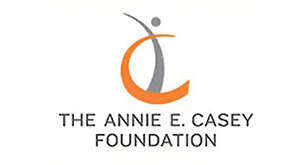Generation Z has emerged as a population increasingly worthy of attention, especially now as its older members are in their 20s and have become a politically engaged force in recent elections. Born after 1996, Generation Zers made up one-tenth of the 2020 electorate and have added 8.3 million newly eligible voters since November 2022 — reaching an estimated 41 million total eligible voters in 2024. While they share a number of characteristics with millennials, their formative years have been shaped by a drastically different world, resulting in key differences in attitudes, tendencies and outlook. Statistics compiled by the Pew Research Center and the KIDS COUNT® Data Center paint a clear picture. Here’s what we know.
DIVERSITY IS THEIR NORM
One of the core characteristics of Generation Z is racial diversity. As America’s demographics continue to shift, Gen Z will be the last generation that is a majority white — just barely, with 51%.
The younger Generation Alpha, born 2013 to 2025, is 48% white and on track to be the most diverse generation yet. On the other hand, much larger shares of the older millennials, Gen Xers and baby boomers are white: 55%, 60% and 72%, respectively.
Gen Z is more racially and ethnically diverse than older generations, with:
- 25% Latino or Hispanic;
- 15% Black;
- 6% Asian American or Pacific Islander;
- 5% two or more races; and
- 2% American Indian or Alaska Native young people.
As Gen Zers grew up over the past two decades, children in immigrant families grew more common, too, rising from 19% of the country’s child population in the early 2000s to 25% in 2021.
For many Gen Zers, the backdrop of their early years included the country’s first Black president and the legalization of gay marriage. They are more likely to have grown up amid diverse family structures — whether in a single-parent household, a multiracial household, or a household in which gender roles were blurred. As a result, they are less fazed than previous generations by differences in race, sexual orientation or religion.
THEY ARE OUR FIRST “DIGITAL NATIVES”
Another characteristic of Generation Z is their native use of technology. Whereas millennials were considered “digital pioneers,” who bore witness to the explosion of technology and social media, Gen Z was born into a world of peak technological innovation — where information was immediately accessible and social media increasingly ubiquitous.
These technological advancements have had both positive and negative effects on Gen Z. On the plus side: an abundance of information is at their fingertips, allowing Gen Zers to broaden their knowledge, access resources and be proactive in their learning. Social media can also offer social support from peers or others, which may be especially beneficial for marginalized young people, such as sexual and gender minorities. On the other hand, too much screen time is linked to depression and anxiety, low self-esteem and poor body image, eating disorder behaviors, inadequate sleep and other health problems. Additionally, technology is changing the economy and the nature of work, increasingly requiring postsecondary education to prepare young people for new jobs, leaving many low-income Gen Zers vulnerable as they enter the workforce.

